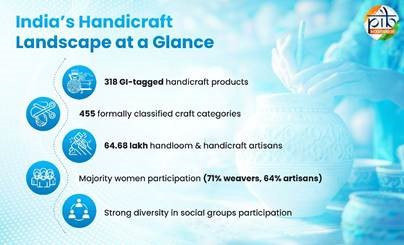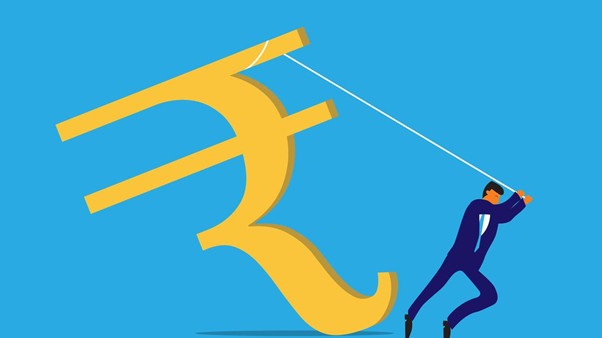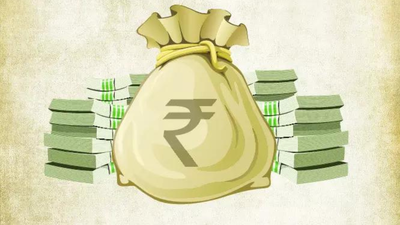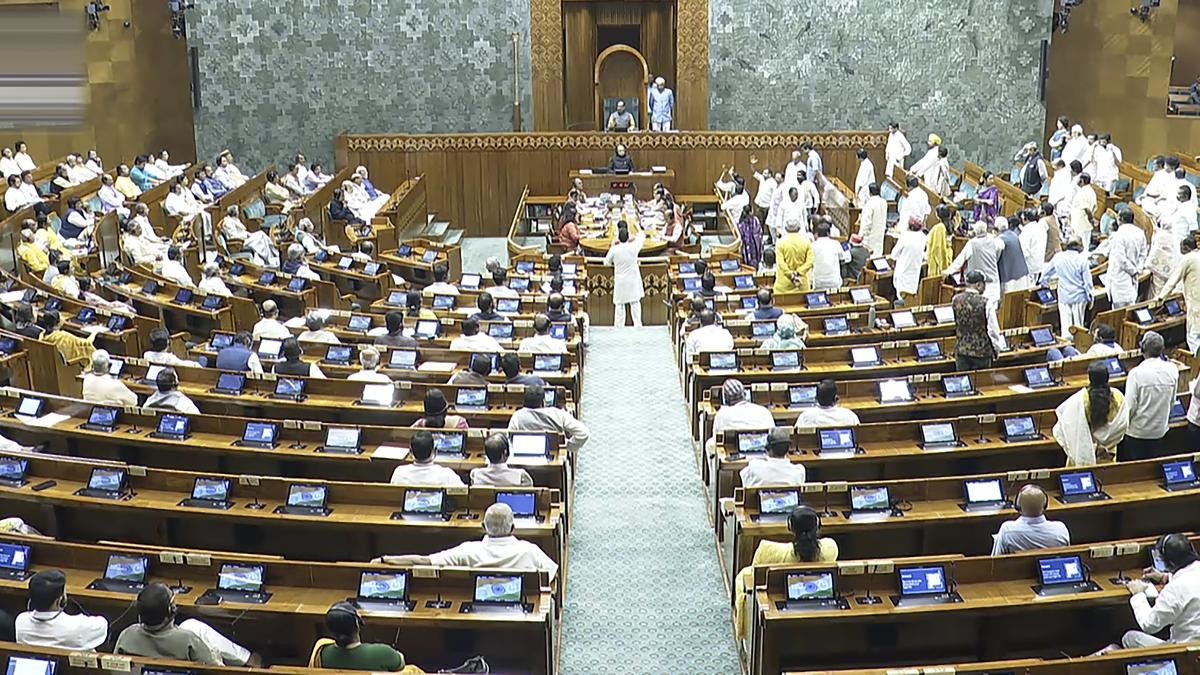Copyright infringement not intended
Picture Courtesy:The Hindu
Context:
Industrial activity in India slowed to 4% in September 2025, marking the lowest growth in three months. During the first half of FY 2025-26 (April–September), the Index of Industrial Production (IIP) grew only 3%, the slowest pace in at least five years.
Current Trends:
According to Ministry of Statistics and Programme Implementation (MOSPI)
- Mining Sector: Contracted 45% in September 2025, down from 6.6% in August 2025.
- Consumer Non-Durables: Continued contraction for the second consecutive month at -2.9% in September 2025.
- Consumer Durables: Growth surged to 2% in September 2025, up from 3.5% in August 2025.
- Primary Goods Sector: Growth slowed to 4% in September 2025, down from 5.4% in August 2025.
- Manufacturing Sector: Growth accelerated to 8% in September 2025, compared with 3.8% in August 2025.
What is Index of Industrial Production (IIP)?
The Index of Industrial Production (IIP) is a monthly indicator of the short-term changes in the volume of production of industrial sectors in the economy. It reflects the performance of the industrial sector and provides insight into the overall economic activity.
Key Features of IIP:
Coverage:
- Includes manufacturing, mining, and electricity
- Manufacturing accounts for the largest weight in the index.
Purpose:
- Measures industrial growth over time.
- Helps policymakers, economists, and investors gauge economic trends.
Base Year:
- IIP is calculated relative to a base year, which is currently 2011-12.
- Growth is expressed as a percentage change from the base year.
Frequency:
- Published monthly by the Ministry of Statistics and Programme Implementation (MOSPI).
Importance of the Index of Industrial Production (IIP):
- Measures Industrial Growth: IIP tracks the volume of production in major industrial sectors: manufacturing, mining, and electricity.
- Economic Planning and Policy Making: Policymakers use IIP data to formulate industrial and economic policies.
- Indicator of Economic Health: Since the industrial sector is a key component of GDP, IIP growth reflects the overall economic activity.
- Investment and Business Decisions: Businesses and investors use IIP data for production planning, inventory management, and market strategy
- Sectoral Analysis: Provides insight into sector-wise performance, e.g., mining contraction or manufacturing growth.
- Forecasting and Economic Research: IIP is used by economists and researchers to predict future economic trends.
Why there is a slowdown in IIP?
- Delayed Policy Impact: GST Rate Cuts: Implemented late in the month, affecting industries like consumer non-durables.Real impact on sales and production may be reflected only in October–November 2025.
- Base Effect: Industrial growth comparisons are influenced by high growth in previous periods, e.g., pandemic recovery in 2021-22 led to a low base in 2020-21, causing distortions in year-on-year comparisons.
- Seasonal and Market Factors: Some sectors, like consumer durables, saw growth due to festival demand, whereas others lagged.Weak domestic and global demand can temporarily slow industrial production.
- External and Global Factors: Supply chain disruptions, higher input costs, and global demand slowdown can negatively affect industrial output.Volatility in energy prices and raw materials can impact mining and manufacturing sectors.
Broader implication of IIP slowdown:
Economic Implications
- GDP Growth: Industrial sector contributes significantly to GDP; a slowdown drags overall economic growth.
- Investment Climate: Weak industrial output reduces investor confidence, affecting both domestic and foreign investments.
Employment and Labor Market
- Job Losses: Slower industrial activity may lead to layoffs or reduced hiring, especially in manufacturing and mining.
- Wage Pressure: Reduced production can limit wage growth and benefits for industrial workers.
Sectoral Implications
- Manufacturing: Stalled production affects ancillary industries and supply chains.
- Mining & Primary Goods: Slowdown in resource sectors impacts downstream industries like construction and energy.
Policy and Fiscal Implications
- Revenue Impact: Lower industrial activity reduces corporate tax and GST collections.
- Stimulus Measures: Government may need to introduce incentives, subsidies, or reforms to revive production.
- Monetary Policy: RBI may adjust interest rates or liquidity support to stimulate industrial growth.
Social Implications
- Reduced Consumption: Lower industrial production can indirectly impact consumer goods availability and prices.
- Regional Disparities: Industrial slowdown affects states differently depending on their industrial base, potentially widening inequality.
Government Measures to Revive Industrial Growth:
Goods and Services Tax (GST) Rate Cuts
- Reduced GST rates on multiple items to boost consumer demand.
- Targeted sectors like consumer non-durables and durables to stimulate sales.
Production-Linked Incentive (PLI) Scheme
- Encourages domestic manufacturing in sectors like electronics, automobiles, andpharmaceuticals.
- Provides financial incentives based on incremental production and output quality.
Credit Support for Industries
- Special credit facilities for MSMEs to ease working capital constraints.
- Measures like Trade Receivables e-Discounting System (TReDS) platform and priority lending help smaller manufacturers access finance.
Ease of Doing Business Initiatives
- Simplified regulatory compliance, labour laws, and licensing procedures.
- Encourages private sector investment and faster project execution.
Way forward:
- Boost Demand: Timely GST cuts and targeted fiscal measures to stimulate consumption.
- Encourage Investment: Support MSMEs and attract private & foreign investment.
- Modernize Industry: Adopt advanced technologies and expand sectoral capacities.
- Improve Infrastructure: Strengthen transport, power, and logistics for efficiency.
- Skill Development: Upskill workforce for modern manufacturing needs.
- Policy Stability: Ensure consistent reforms and data-driven monitoring.
- Promote Exports: Incentivize export sectors and reduce import dependence.
Conclusion:
The recent slowdown in India’s Index of Industrial Production (IIP) reflects structural, policy, and demand-side challenges in key sectors like mining, manufacturing, and consumer goods. While government measures such as GST reforms, PLI schemes, credit support, and infrastructure development provide relief, sustained growth requires a holistic approach—boosting demand, modernizing industry, improving infrastructure, upskilling labor, and ensuring policy stability. Strengthening these areas will not only revive industrial output but also enhance economic resilience, employment generation, and overall GDP growth.
Source: The Hindu
|
Practice Question
Q. Industrial growth is critical for economic resilience, employment generation, and fiscal stability.” In light of the recent IIP slowdown, analyze the challenges faced by the industrial sector in India and the government’s policy measures to revive it. (250 words)
|
Frequently Asked Questions (FAQs)
IIP measures the short-term changes in the volume of production of a basket of industrial goods in sectors like manufacturing, mining, and electricity.
- Weak performance in mining, primary goods, and consumer non-durables
- Delayed impact of GST rate cuts and uneven demand recovery.
- Global supply chain disruptions and higher input costs.
- Source: Bank of Baroda Economic Analysis, MOSPI
Consumer durables and certain manufacturing segments showed growth due to GST reforms and festival-season demand.










